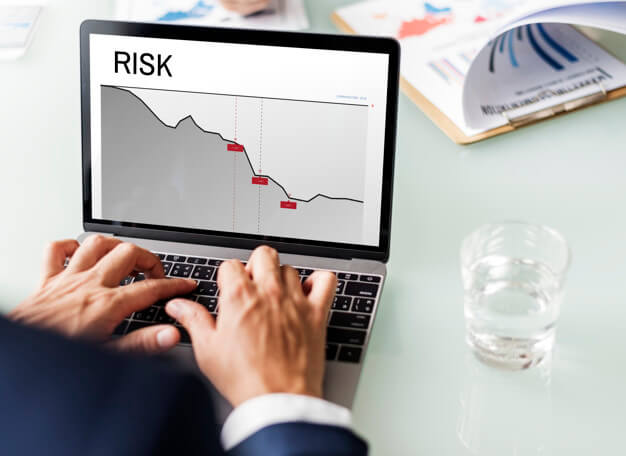Are you speculating the possible perils that your project/business might face? All the threats to your endorsed efforts, monetary input and time added in?
The next step naturally is to develop plans to first avoid these problems. Even in the event of those problems arising, you prepare a contingency plan to execute. This results in the prevention, removal or masterfully handling the problem. All of this comes under the shade of Risk Management Process.
You may have just gotten the project of your dreams, something you’ve wanted and worked for some time now. There are risks involved though that could very easily make it go erratic for you or you might just fail to come up with the results you envisioned.
It is natural to think that risks are something negative. However, what most people forget to add to their whiteboard is that risks can very well be positive too. A risk taken thoughtfully and calculatedly may very well add profit or value to your project/work at the end of the day.
So, risk management is not always about avoiding risks. It is more about integrating risks in your project overall—accepting them as an unavoidable part during the execution of your plan. You may have thought out every step of your project, pre-planned and organized all the possibilities as well; there will always be some level of uncertainty involved.
So your job as a manager is to manage those risks, but how? We will delineate the steps for you in this article. So read on and add further things in it from your experience and customize it to your project and your company culture.
Types of Risks in Project Management
You have to remember that some of these risks are internal, in your control and can be managed. Other risks are external, not entirely in your control.
The real consequences of these risks lie in their stretch, magnitude, and the probability of their occurrences.
- Cost risk
- Performance/Result risk
- Schedule risk
- Operational risk
- Legal risks
- Market-related risks
- Strategic risks
- Governance risks
Steps of Risk Management
- Identify
- Analyze
- Prioritize
- Ownership
- Respond
- Monitor
1. Identify

You need to recognize your possible or potential risks before you can manage them. This part of the whole process is more about What/Which. What risks you are sure to face and which you might have to tackle.
You have to take a step further than just identifying the risks; take special care in realizing the potential effects it could have on your desirable results.
Identifying your risks could be a very meticulous process, so you might need all of your team’s efforts. Each of them working in their respective position and having specific responsibilities can give an insight that may not occur to you on your own.
The data that you might have available at the time of identifying a risk could be limited, or it might very well keep changing. So it would be a great idea if you repeat this process. You will recognize the need to add to your list of potential risks as you go through the process yourself.
However, you would have to prioritize the most relevant risk and try to mitigate that first. You could use a PDRI (Project Definition Rating Index) – an efficient tool that helps you to recognize high-risk areas. It will show you the results in the form of a sore that you can utilize statistically to compare. This will give the level of certainty you have for any project despite the risks.
Check this blog:
The Best Risk Management Software of 2024
2. Analyze

Once you have all the possible risks recognized and listed down, use your analytical skills and possibly some sound advice from your team members to really diagnose your list. Look at the list you’ve made and see where on the spectrum of “likely to happen” do they fall. This is how and why part of your risk management process.
During this step of the risk management process, you would be thinking of the effect each of the risks would have on the project individually and perhaps collectively as well. You will find many risks would be quite idiosyncratic to your current project and others would be more general type – the sort you already have experience with.
Effectually and meticulously analyzing your risks would save you tons of trouble in the future. You can avoid any possible litigation and negative impacts you might have to endure. You can critically think over whether some risks are completely preventable or have to be minimized.
This is possibly one of the toughest steps in the whole process. Making the decision here is difficult; following through with it later is relatively easier. You would never have 100% information on it, so you would be taking a risk essentially.
Like I mentioned before, some of the risk management protocols might already be in effect or thought our in your company. So pay heed to the advice of the seniors and go through the processes already in place for such incidences.
You might want to analyze your risks quantitatively as well as qualitatively. This will help you to protect your assets and resources and improve the outcome of your project — think over the costs and benefits, socio-economic factors.
Just place your risk at the center of the table and analyze it from every angle possible. Do not leave anything and allow it to turn into liabilities. Brainstorm!
3. Prioritize

Having listed and analyzed your list of risks, you would have a clearer idea at this point that not all of the risks are worth your time, effort and money. However, some of them would be more critical and, consequentially, would need more concentration.
Do not let a long list of risks hold sway over you. Use this simple tip to make it easier for you (that’s what we are here for, aren’t we?) Just compartmentalize the long list into shorter ones – High risk, Medium risk, Low risk. Easy, right?
There would surely be some items on your list that would have to be completely ignored; they may or may not have a big impact on your project.
4. Ownership

Now, that you have used your brain cells to figure out all of the possible problems, risks, and their level of exigency. You can assign the whole task of being an overseer to the process. This would take some burden off your shoulder too as a manager (you would still have to keep an eye on all of it but just not constantly).
You can delegate this work to someone who is experienced in this area, a person who has expertise. Or you might want to assign this task to anyone in your team. That decision is up to you. The person you would giving this work to should be able to foresee any changes or further arising risks and be able to keep a straight head to resolve them.
5. Response
This is the part in the duration of your project where you have already executed your plan. However, you end up hitting a bit of a snag. You would now utilize all of the previously done planning and apply it! You would have to recognize whether that risk is going to be maneuvered in a way that affects your project positively or negatively?
Then for each of the risks involved you have a plan to mitigate and alleviate it. You might have to rethink your plans for the risks at this point again in light of the new information or circumstances. Show your strong work ethics here and be certain on transparency with everyone: Your team members, clients, any stakeholders.
6. Monitor

You would have to evaluate the effectiveness of your plans and monitor the entire progression. This would help you identify any deficits or changes you need to make in your plans. The results you will get as a result of all your tracking would serve as a basis to create new approaches and up-grade the previous ones you’ve used.
All of your efforts would be for naught if you did not monitor your risks for mitigation. Keep a track of all the triggers, new risks, the progress of your plans.
Fear not!
So, the word risk might sound alarm bells in your mind, but we hope that having read this article, it has become more governable. Just remember that you have to create a boundary of contingency around your project using the steps we have just expounded on. This will give you the confidence to move forward with your plan. Godspeed!

